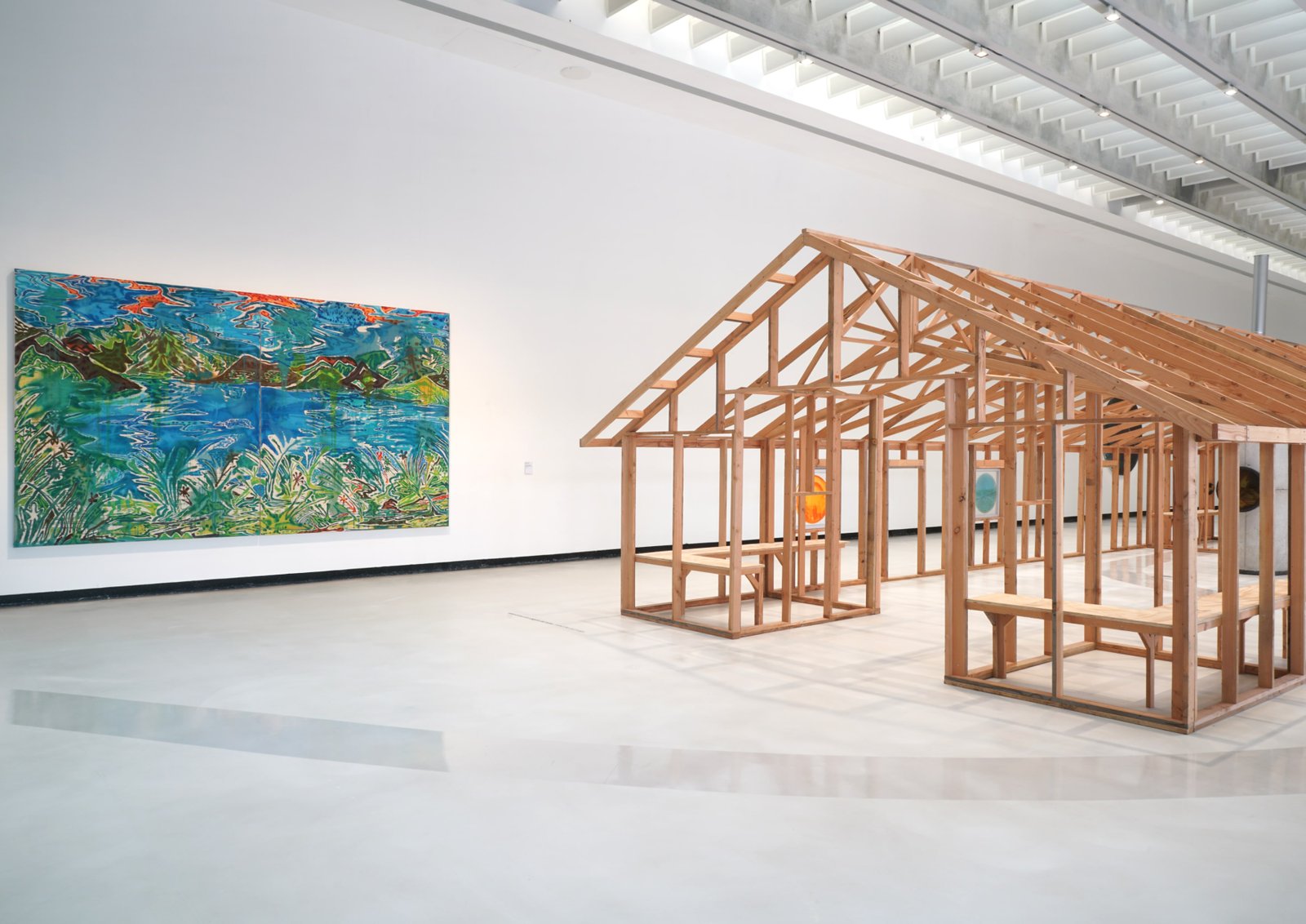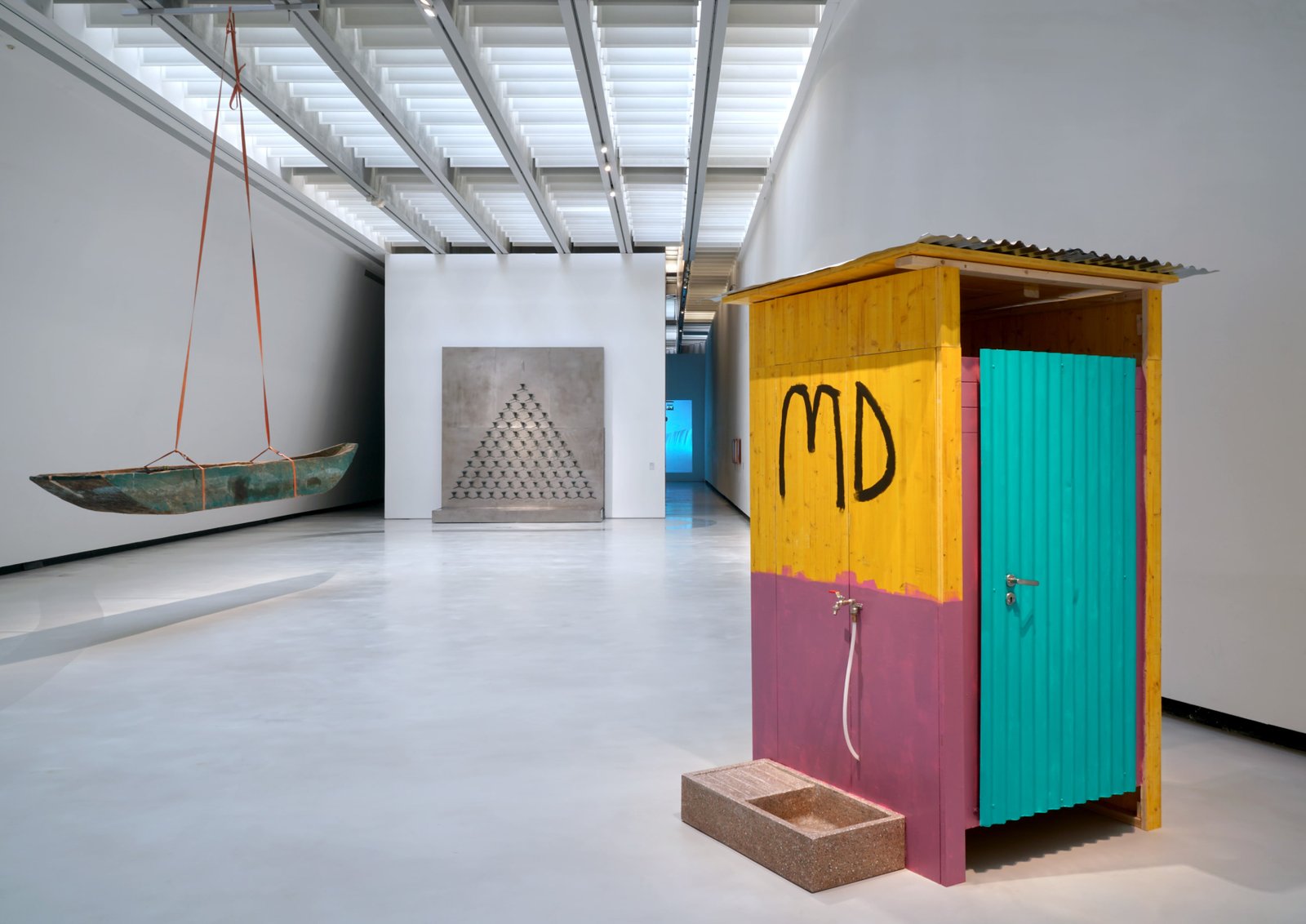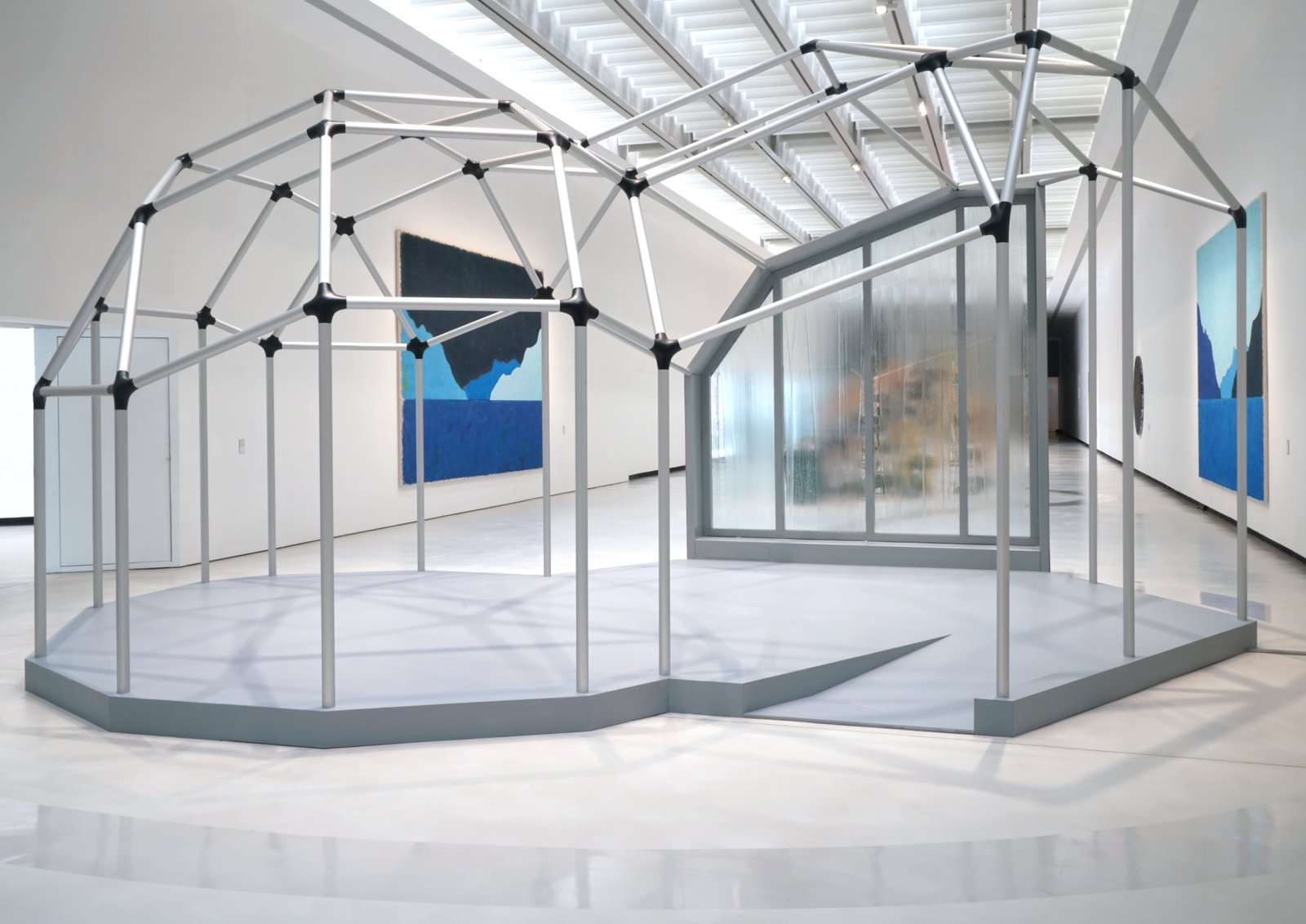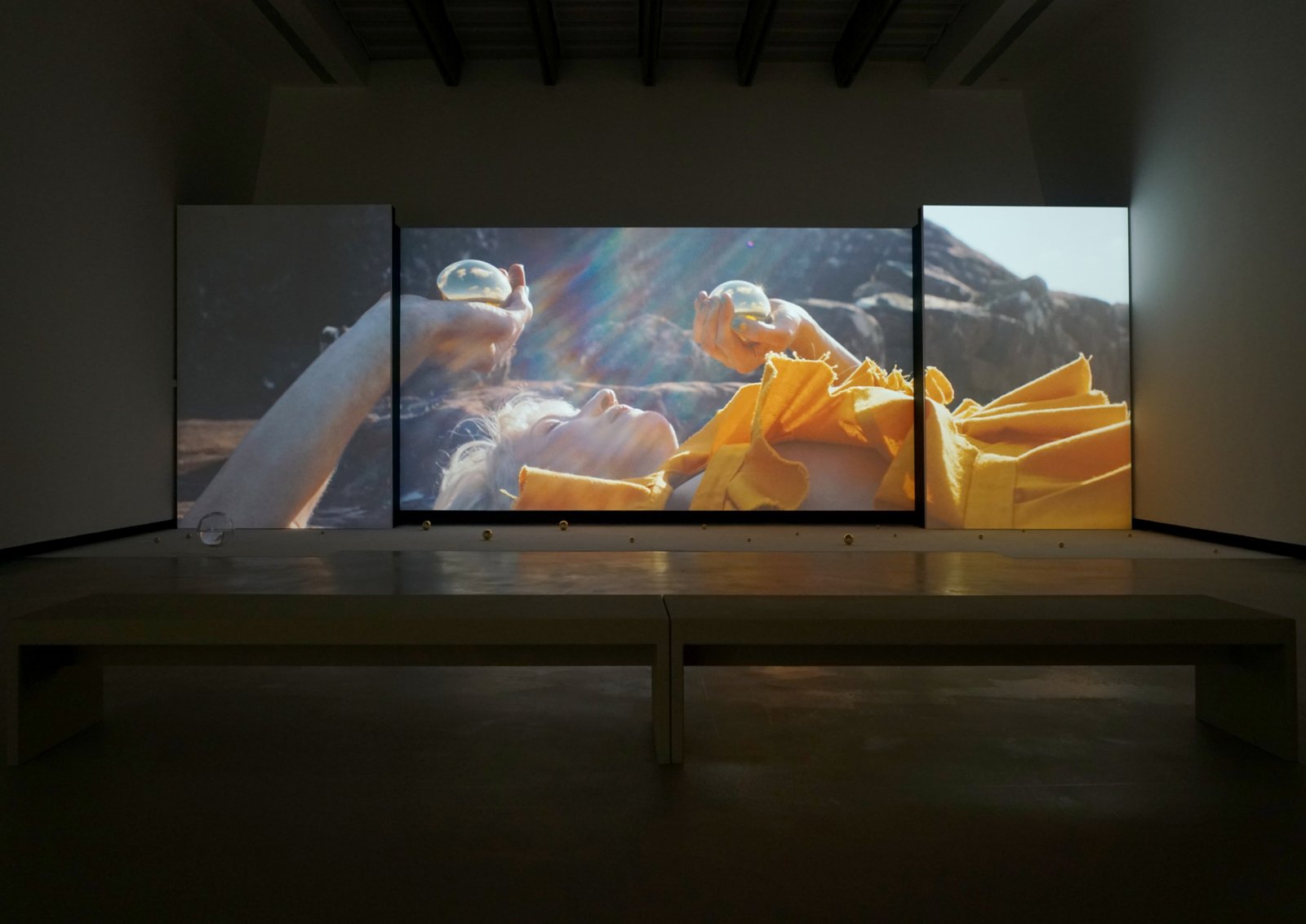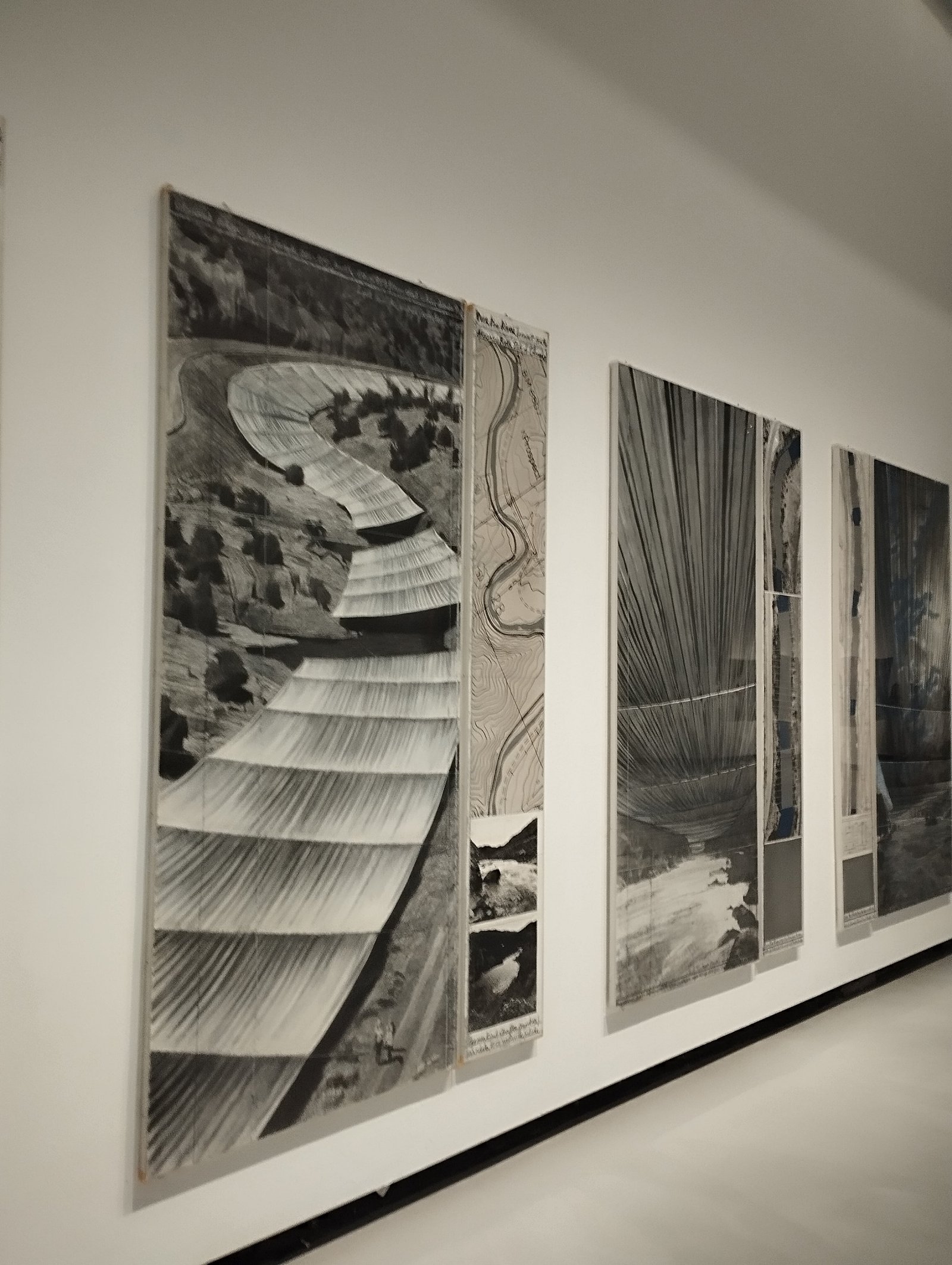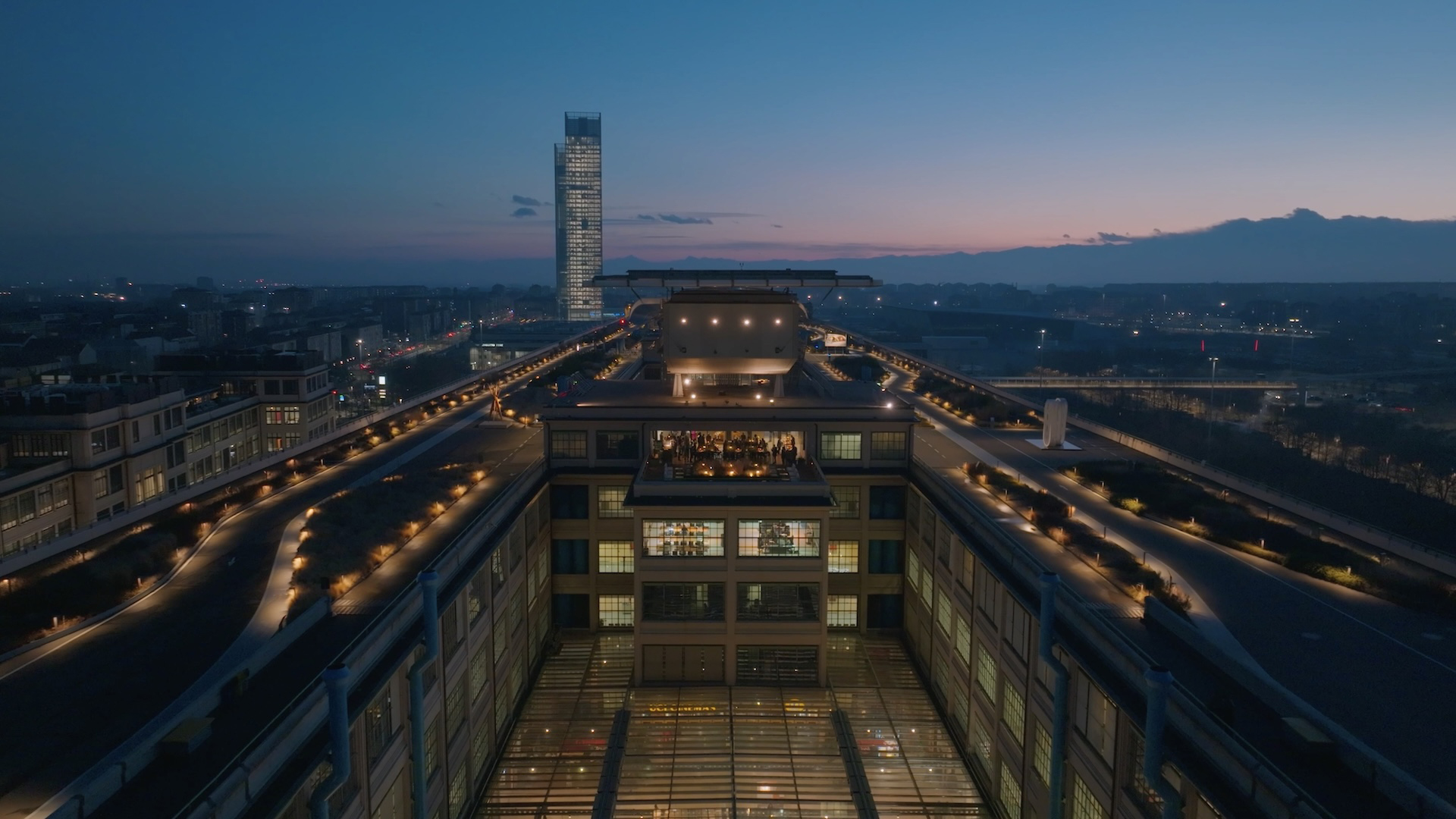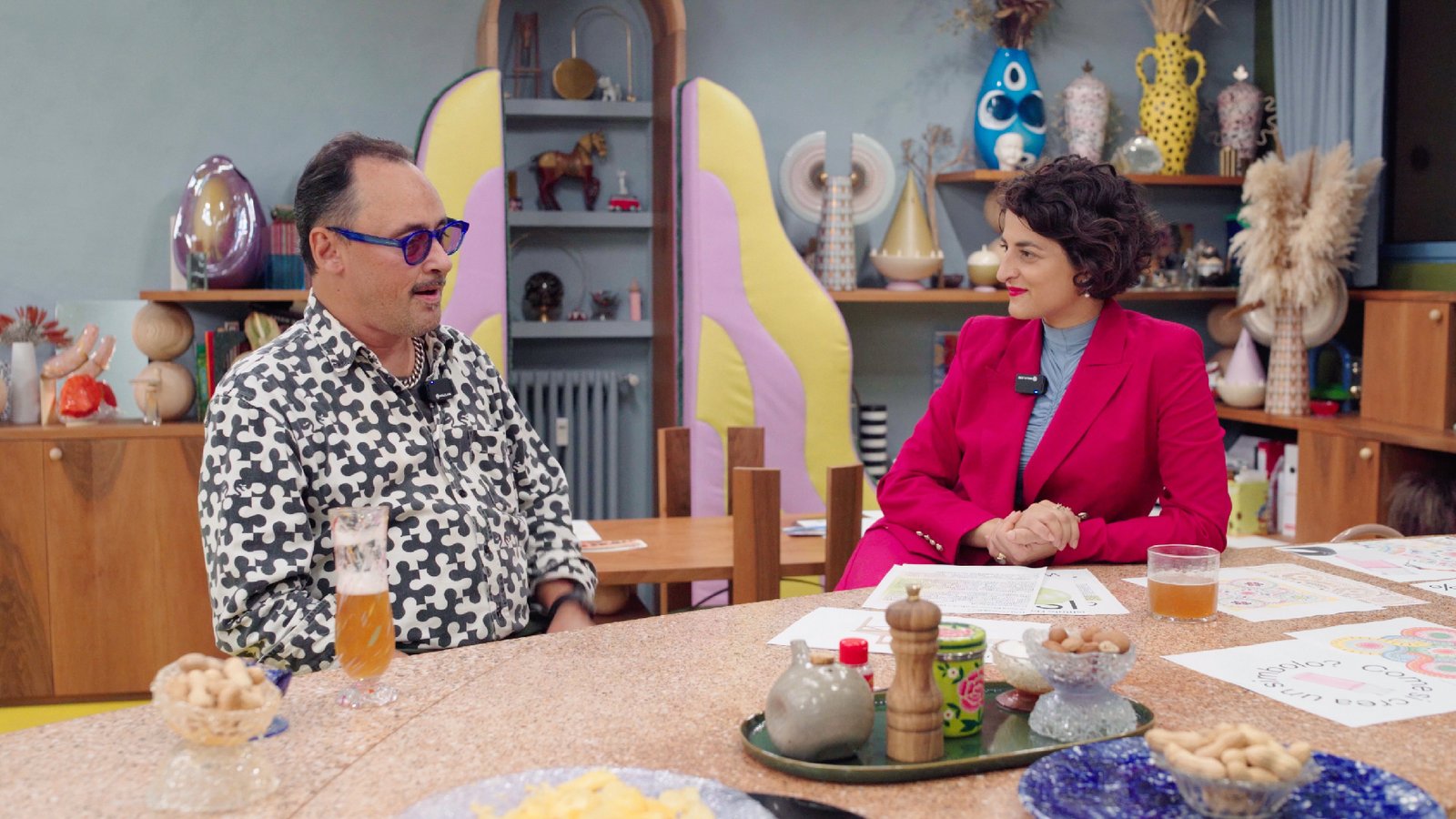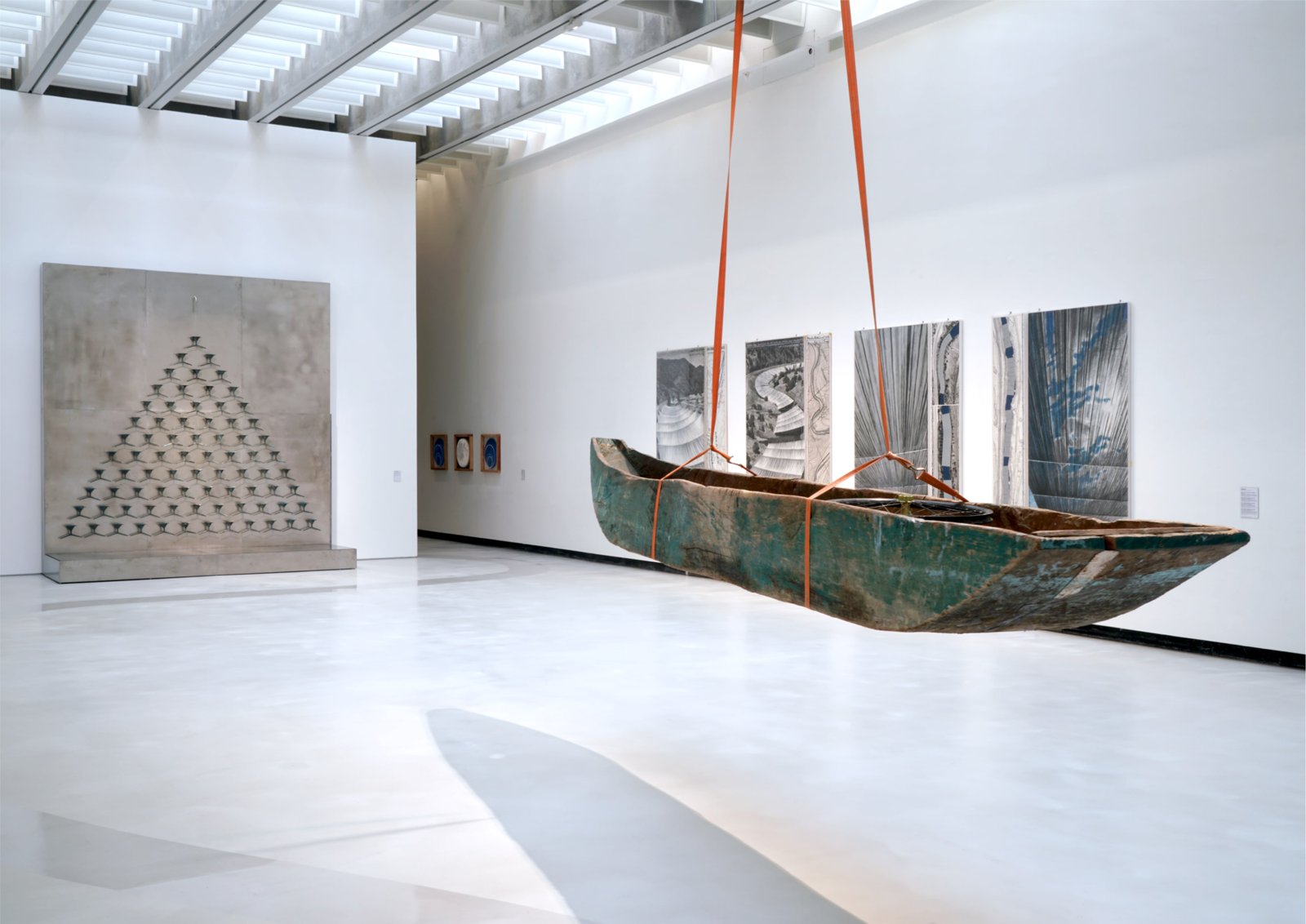
Something in the Water: Exploring Water Through Art at MAXXI
A group exhibition blending public art, ecological activism, and sustainable design, transforming the gallery space into an immersive experience on community, nature and environmental rights.
“Something in the Water” is the title of the exhibition at the MAXXI Art Department, curated by Oscar Tuazon (Seattle, 1975) with Elena Motisi as associate curator. The exhibition explores water as both metaphor and element—resistant to any attempt at molding, serving as an essential medium for artists: a pure mirror. Featuring a new, previously unseen production created in Rome, the exhibition at MAXXI marks a new chapter in Tuazon’s broader “Water School” project—an initiative that combines public art with an exploration of dynamics and politics related to access and control of land, water, and infrastructure. It represents an all-encompassing practice of creating spaces for encounter and collaboration. The exhibition is designed to feel almost like an outdoor space, floating within the gallery.
It presents iconic works that touch on the edges of architecture and activism, evoking the sinuous flow of the Tiber River's bends.
Curator Tuazon is an American artist known for linking the functional possibilities of sculpture with the politics of public art. He skillfully explores a hybrid language between art and architecture in his projects and sculptures, fostering a dialogue between industry and ecology, urban and natural contexts.
An established artist, Tuazon was once an assistant to Vito Acconci. Over a decade ago, he founded the public art project “Water School,” which delves into the power dynamics governing access to the planet's raw materials. His interdisciplinary, minimalist, conceptual approach—rooted in architecture—produces objects and environments for buildings, updating the utopian ideas that formed the foundation of 1970s art.
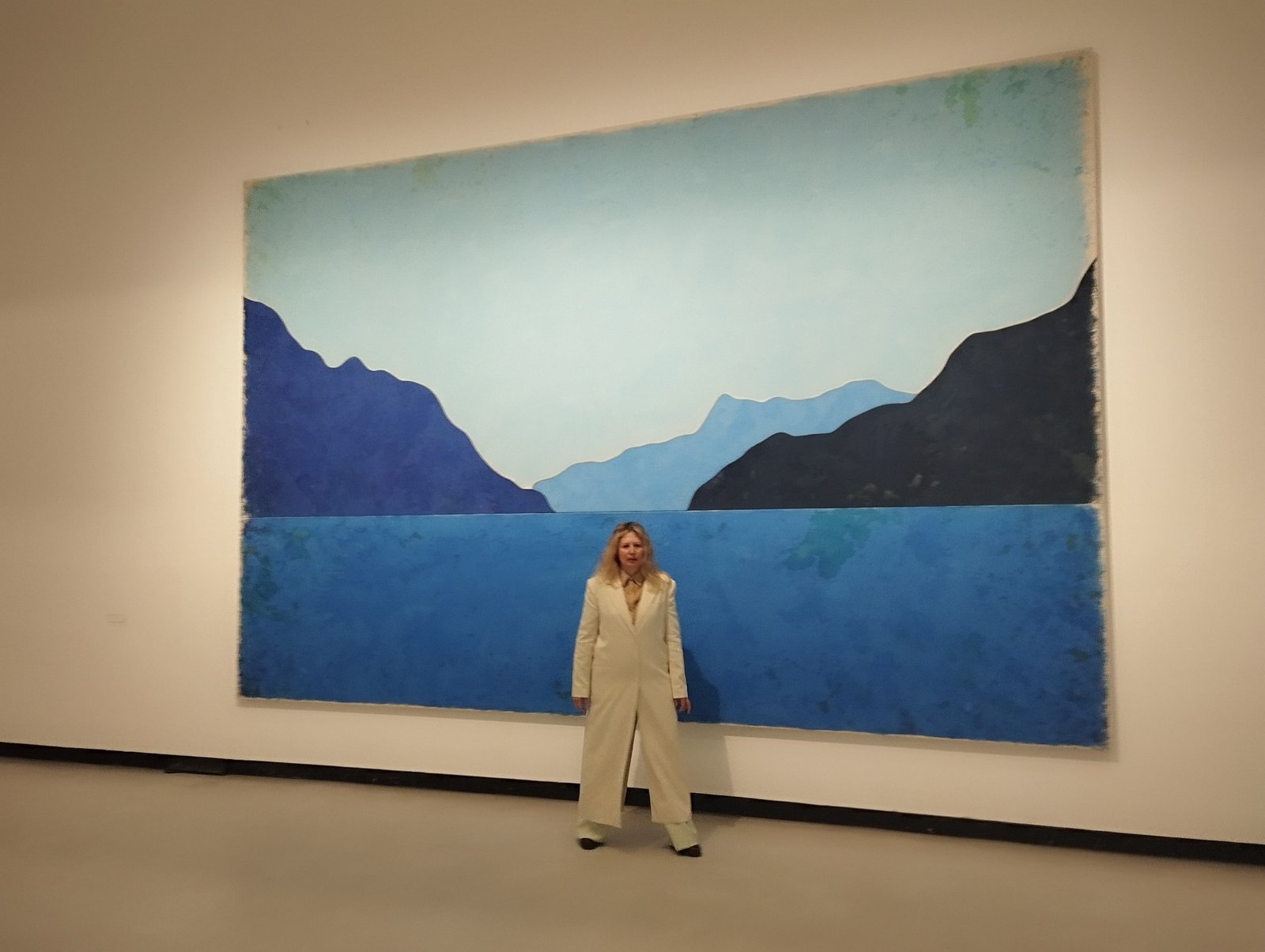 Something in the Water, Camilla Boemio in the exhibition spaces, Fondazione MAXXI, Rome
Something in the Water, Camilla Boemio in the exhibition spaces, Fondazione MAXXI, Rome
According to Tuazon: “Working with water is an experiment with the infinite, a continually evolving learning process that leads us to engage with our communities and the world around us. Water is smarter than us. Water is the ultimate teacher, and as an artist, I consider it an essential tool for creating art. I also deeply believe that art has a special capacity to expand our understanding of the world, and it is my great privilege to bring together artists who are extremely significant in their research journeys”.
Artistic poetics and social awareness branch out in the exhibition through a succession of images, structures, and words.
Striking on the walls are “siebtermaizweitausendundvierundzwanzig” (2024), two enormous mirror-like canvases by Ugo Rondinone inspired by the landscapes of Lucerne, reduced to chromatic and gestural essentials to deliver art accessible to all. Also featured is “Kuku Town Core Unit” (2023) by Marjetica Potrč, a new edition of a service unit designed for Cape Town. Balancing between urban planning and anthropological project, it symbolizes activism aimed at legalizing informal settlements.
With the four cartographic panels of the project “Over the River” (1994–2007), one discovers the magic of a project conceived for the Arkansas River—never realized but pursued for years by Christo and Jeanne-Claude. Abraham Cruzvillegas presents the concept of “autoconstrucción” with “Icharhuta atonal en cientotreyntaidosavos de tono (para Luis Gonzalez y Gonzalez)” (2017), a traditional canoe of the indigenous peoples of Lake Pátzcuaro, evoking the memory of waters and the communities inhabiting their course.
Lita Albuquerque welcomes visitors with a three-channel video installation titled “Liquid Light” (2022), a journey through time featuring herself and her daughter—a dancer and performer—in an attempt to understand the relationship between humans and nature. Opposite this, “Great Lakes Water School” (2023) by Oscar Tuazon in collaboration with Peter Sandbichler emerges as an experimental construction entirely made from recycled materials. The journey continues in Gallery 2 with “Water Cats 8” (2015) by Matthew Barney, a copper sculpture where the artist entrusts the creative gesture to the transformative power of water—a work that introduces the artist in a less-known language compared to his iconic video installations. Here, metal meets water pressure, sculpting the material into organic forms, transforming the melting process itself into one of the essential elements of the work.
At the heart of Gallery 2, “Building” (2023) by Tuazon transcends the form of a simple structure, presenting itself as a relational space where the public and the artist's works find a home alongside the video narrative of the Cedar Spring Water School.
“Niagara” (1975) and “Hydra’s Head” (1974) by Nancy Holt conclude the exhibition's narrative with moving images of the powerful waters of Niagara, which, in their original purity, transform into a work that exalts the strength and magnificence of water.
In this ever-moving kaleidoscope, the conversation continues with renowned Austrian artist Peter Sandbichler, who collaborated with Oscar Tuazon.
Camilla Boemio: CB: Could you introduce us to “Great Lakes Water School” (2023) created with Tuazon?
Peter Sandibichler : Since 2016, Oscar finally obtained permission from Steven Baer and Holly Baer to create various versions of their homes (zome homes), originally built in the 1960s. He has constructed them in different scales (1:1, 1:4, etc.), using various materials and construction techniques depending on the exhibition's spatial context. Oscar and I both have a conceptual approach to sculpture, which made the collaboration plausible.
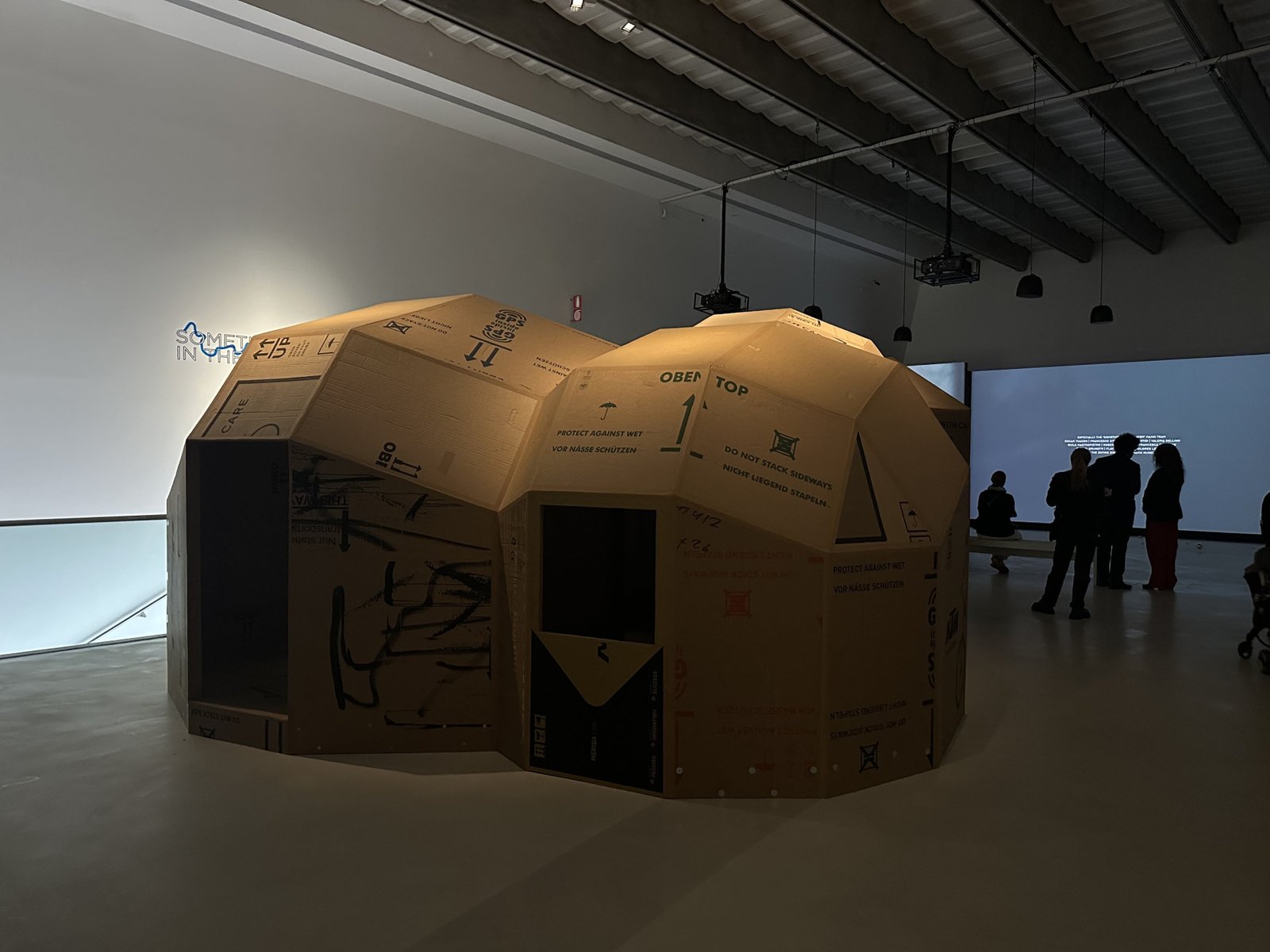 Something in the Water, installation view, photography by ®Luis Do Rosario, courtesy of Fondazione MAXXI
Something in the Water, installation view, photography by ®Luis Do Rosario, courtesy of Fondazione MAXXI
CB: The installation fully engages visitors
PS: When he was preparing the exhibition for fjk3 in Vienna, we got in touch because we share two main interests: working with cardboard and a deep appreciation for Buckminster Fuller's works. Oscar also liked my approach using recycled cardboard from bicycles. So, he asked me to create a version of the building in my style and technique. My version became an additional translation or transition of Baer's original project and Oscar's interpretation. Each version develops its own characteristics. Mine is defined by the material used with its imprints, but also formally somewhat different. For Rome, we reconstructed the Vienna version, but here it appears quite different. In Vienna, it was in a narrow space open on two sides; in Rome, it's accessible from all sides—you can look through it. Naturally, people can enter, sit, lie down, read, talk, do whatever they want. My sculptures are often accessible, playing with physical and tactile experience.
CB: What does activism mean for an artist? Is there something about being an artist that makes feelings of vulnerability and ethics worthwhile?
PS:As an artist, I deal with the "mundanity" in all its aspects, using sculpture—in this case—as a means to show vulnerability. The attitude transforms into activism when one begins to intensely engage with a subject, to enter the context and look beyond the art world's framework. If we didn't do this, the art world would die of boredom, and I wouldn't find the motivation to go to the studio. If such a work manages to reconnect with the source of desire—as Oscar does—it's worth it; otherwise, its purpose wouldn't be long-term.
Something in the Water
April 18, 2025 — September 21, 2025
Artists: Lita Albuquerque, Saif Azzuz, Matthew Barney, Christo, Abraham Cruzvillegas, Torkwase Dyson, Leslie Hewitt, Nancy Holt, Pavlo Makov, Virginia Overton, Marjetica Potrč, Ugo Rondinone, Peter Sandbichler, Anna Sew Hoy, Oscar Tuazon.
Cover image: Something in the Water, installation view_photograph by ®Luis Do Rosario, courtesy of Fondazione MAXXI
Camilla Boemio is a curator, writer and university consultant with a focus on interdisciplinary systems and an intersectional feminist perspective. She has curated projects such as Pera + Flora + Fauna at the Venice Biennale in 2022 and exhibitions such as TEN YEARS: BSR People 14-24 at the British School at Rome and The Bouvet Island at the National Etruscan Museum.
Co-founder of the non-profit AAC Platform, she has worked on innovative European projects with the Università Politecnica delle Marche. In 2022 she curated Segno Aperto by Bruno Lisi and Expanded Cinema with Ben River and Mathew Emmett.
Camilla has participated in major international events, such as the Nigerian pavilion at the Venice Biennale in 2016, and curated the book The Edge of Equilibrium in 2021, which was presented at fairs such as Artissima and Roma Arte In Nuvola.
